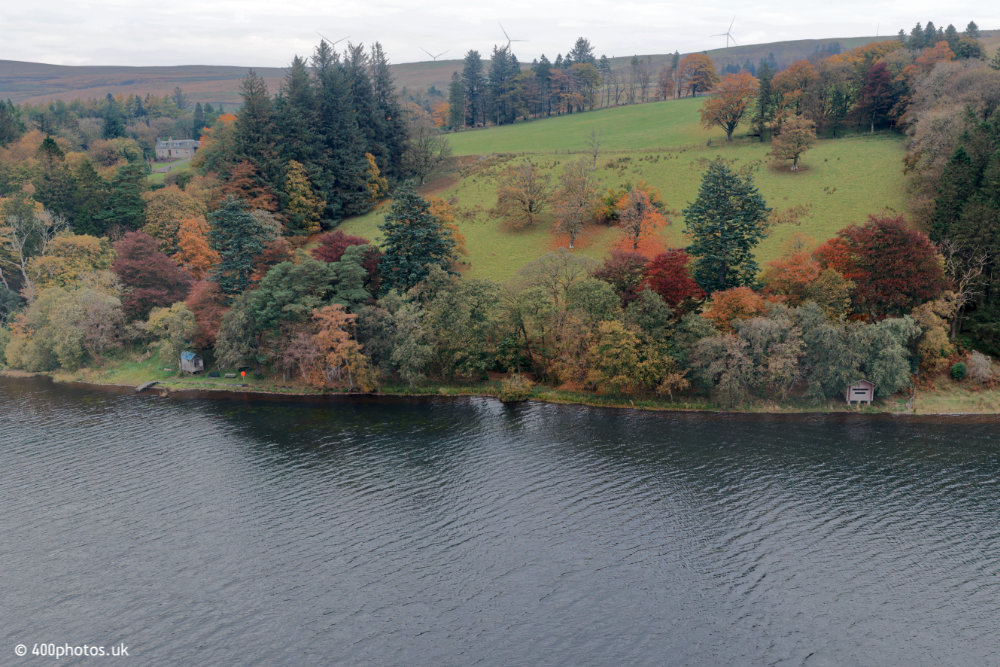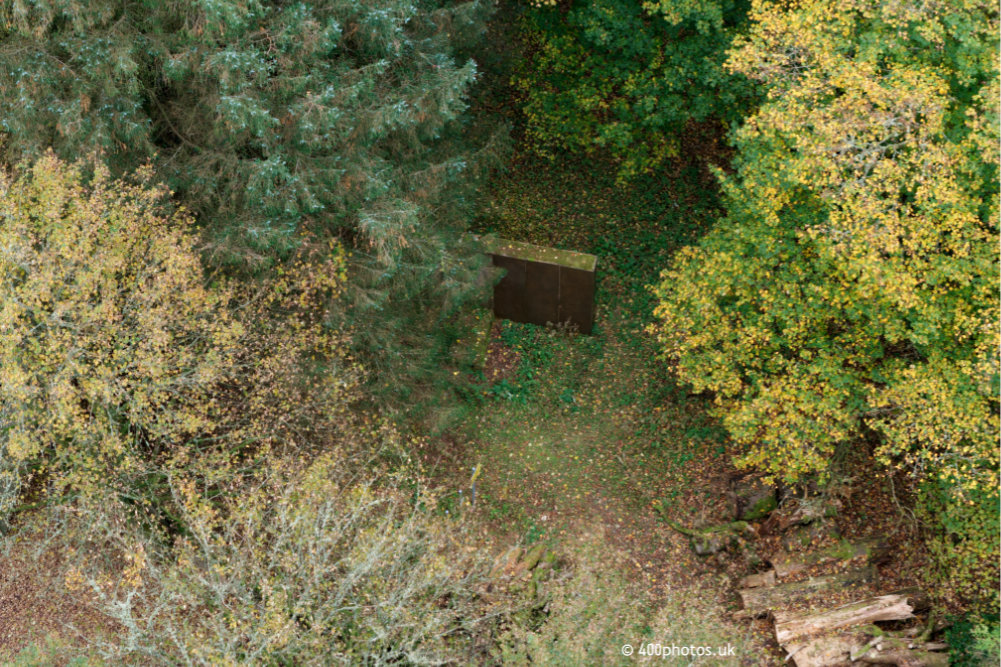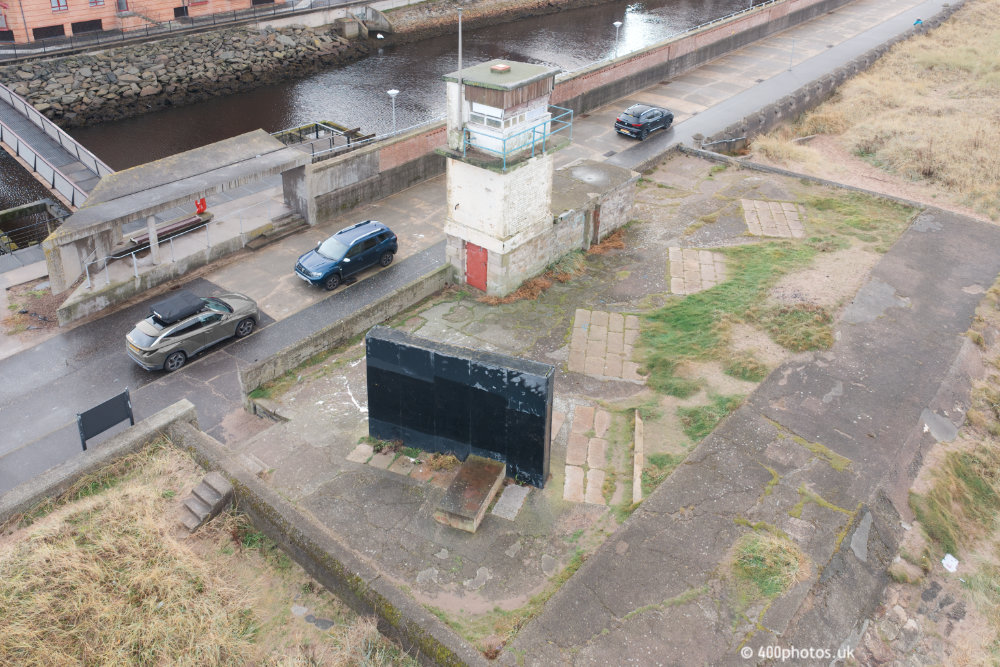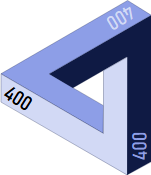River Ayr Way
start at Glenbuck Loch

The River Ayr Way starts at Glenbuck Loch in the woods just to the left of this area.
There's also a fishing hut (private to an angling club) on the left of this view and a wildlife hide to the right which is in fine condition and is freely available for use.
Both are accessible on foot but the paths are a bit rough.
The walk opened in 2006, follows the course of the River Ayr and is forty-four miles long.
There's also a fishing hut (private to an angling club) on the left of this view and a wildlife hide to the right which is in fine condition and is freely available for use.
Both are accessible on foot but the paths are a bit rough.
The walk opened in 2006, follows the course of the River Ayr and is forty-four miles long.

The start of the River Ayr Way is under the tallest tree to the left of centre and is
about fifty yards up the slope from the lochside.

Looking eastwards down through the trees. The marker is a rectangular wooden box coated with sand on the outside to
represent the coast at Ayr at the other end of the loch.
It's in pretty poor condition and can be accessed easily (mainly uphill on tarmac) on foot from the first turn on the right of the road into Glenbuck Heritage Village.
Glenbuck is on the A70 right on the Ayrshire/Lanarkshire border.
It's in pretty poor condition and can be accessed easily (mainly uphill on tarmac) on foot from the first turn on the right of the road into Glenbuck Heritage Village.
Glenbuck is on the A70 right on the Ayrshire/Lanarkshire border.

The marker (about ten feet high and fifteen feet long) from ground level. The wooden panels are warping and
the filler between them is falling out.

The corresponding marker at Ayr harbour is the same thing but it was coated in coal dust to
represent this end of the long distance walk.
That one in particular has been vandalised and spray painted so often that the original surface has been obliterated by overpainting, as you can see in these photos.
That one in particular has been vandalised and spray painted so often that the original surface has been obliterated by overpainting, as you can see in these photos.

